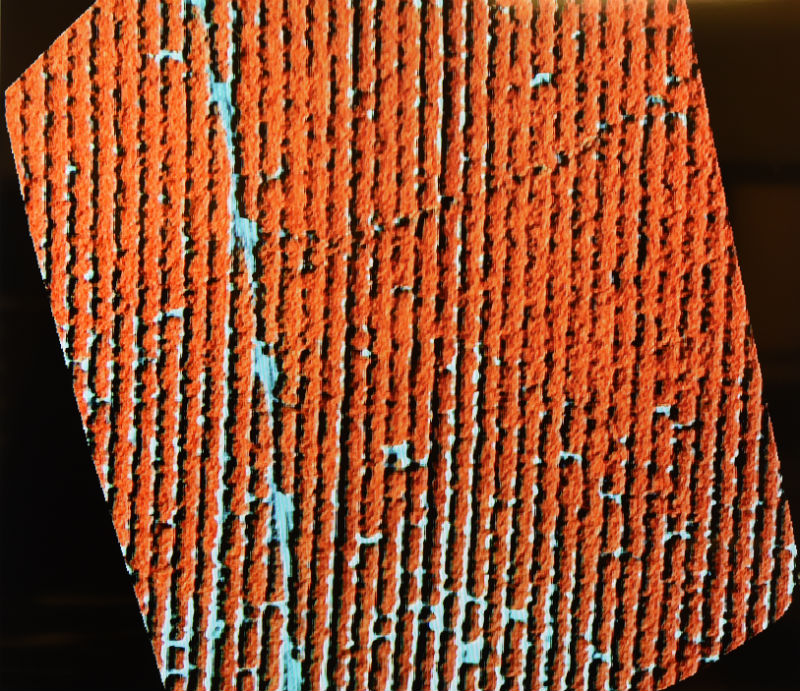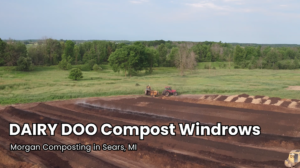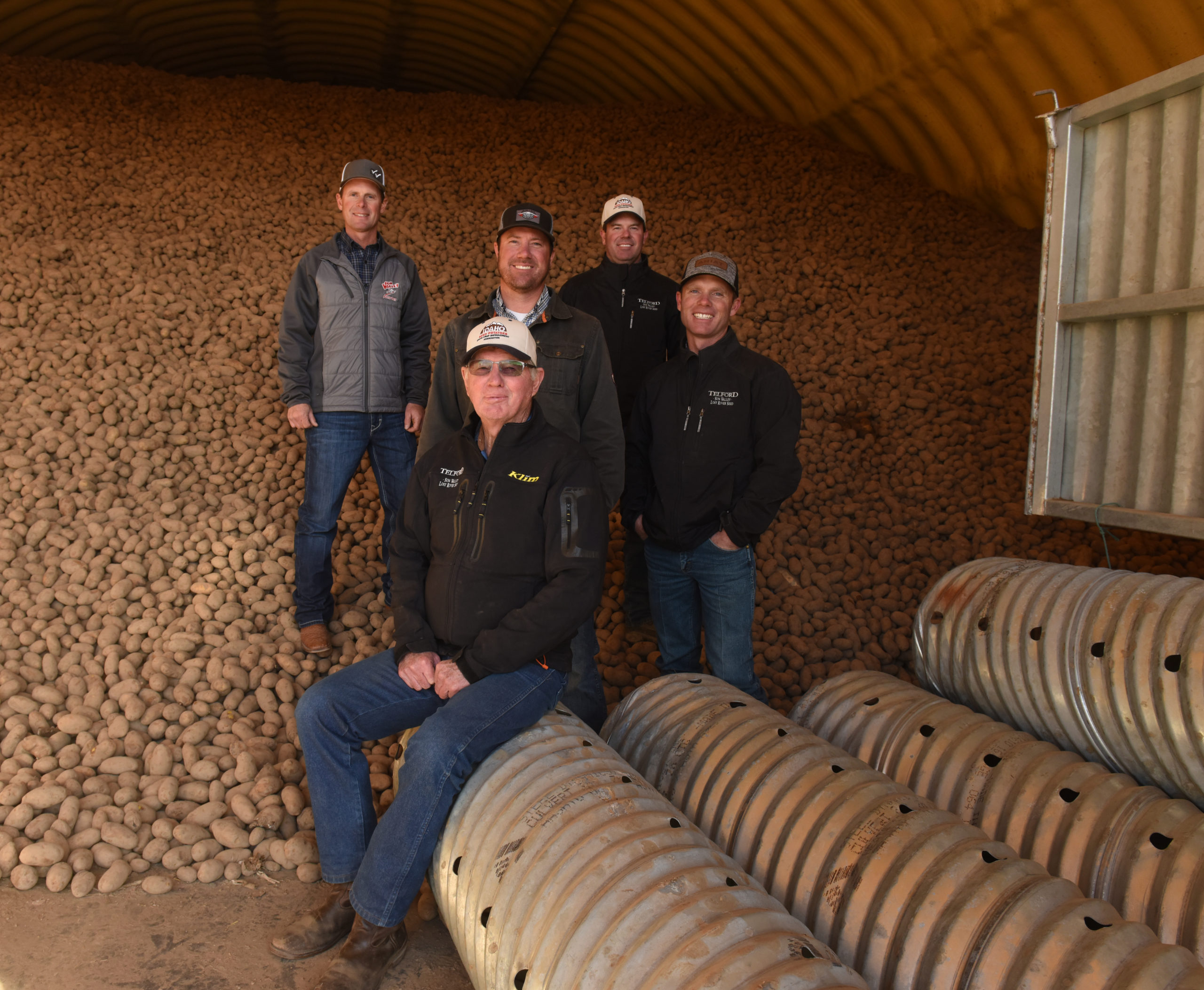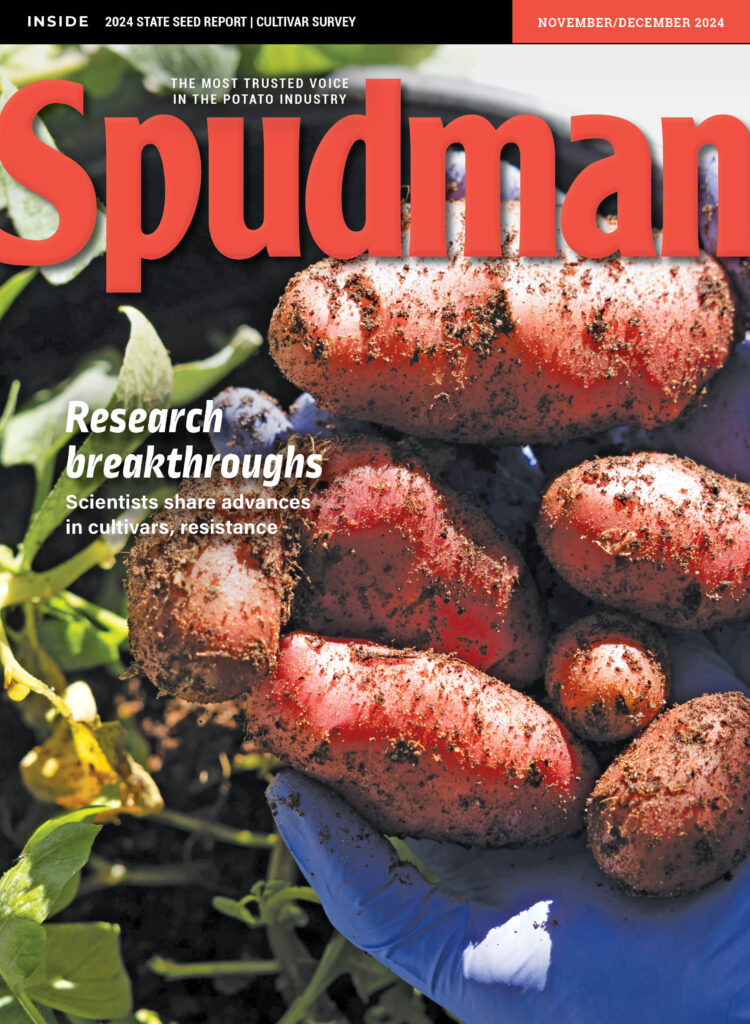
UAS Spreads Its Wings
Donna Delparte is an assistant professor in the Department of Geosciences at Idaho State University (ISU) in Pocatello, and has been performing research in conjunction with UAS for several years, including in potatoes. Her work focuses on pest management.
I’ve been looking at using different kinds of sensors to specifically detect at the plant level,” Delparte said. “We’re particularly interested in viruses, diseases, pest infestations. These are things we want to detect. And there are causes now that we want to look at, the sick and healthy part of the crop.”
Using hyperspectral imaging, with 16-20 bands of information, Delparte’s research has been focused on early season identification of potato virus Y (PVY) in the field. 
“We have been successful, we’ve been able to pinpoint specific problems in the crop and with the latest grant, within the next year, we’ll look at how can we take the technology and make the information usable in the marketplace,” Delparte said. “That is a real return on investment.”
Delparte is now taking the research a step further, finding ways to release it to the public. For the next phase, she received a $179,000 grant from the state’s Idaho Global Entrepreneurial Mission (IGEM) to pursue a project with J.R. Simplot to use unmanned aircraft sensors to improve agricultural field productivity.
“This is a coordinated effort between Simplot and ISU,” Delparte said. “Something that farmers have consistently told us with UAV deployment is, ‘how does this make a difference to my bottom line?'”
She said that growers have been skeptical about investment in UAS.
“Maybe the hype hasn’t met their expectation on what is the return on investment,” Delparte said. “So what we’re looking at is addressing specific questions that could help a grower make a significant contribution towards that bottom line.”
Delparte said that her UAS research has expanded to include satellite imagery.
“Satellite imagery can cover huge areas and capture that data fairly regularly, and from that we can identify areas that maybe we need to go and look at,” Delparte said. “The satellite imagery that’s available today is pretty spectacular. It’s meter to half-meter resolution, and a lot of drones, the best they can do is six inches.”
North Dakota State University (NDSU), Fargo, is looking at UAS use for potato research in collaboration with the University of North Dakota (UND), Grand Forks, which has one of the best UAS programs in the United States.
In 2006, UND was named as a Department of Defense Center of Excellence for UAV Education. That eventually became The Center of Excellence for UAS Research, Education and Training at UND.
Alan W. Palmer serves as director of the center and is working with NDSU on the research.
“We support NDSU. They’re our ag school, so we support them by flying the UAS for their research missions,” Palmer said.
The NDSU researcher in charge of the project is John Nowatzki, an agricultural machines systems specialist in the Department of Agricultural and Biosystems Engineering. NDSU does not have a UAS program, but with the help of UND it is finding many potential uses for UAS in the field.
“I’m doing research and educational programs here in NDSU, and our objectives are kind of seeing what is doable in terms of using imagery from an aircraft for crop and livestock management,” Nowatzki said.
One aspect of their research is looking at herbicide resistance in weeds, and what caught their attention of the physiology of resistant plants, which could be detected from the air.
“What we’re finding is herbicide resistant weeds and other weeds do have a different canopy thermal temperature,” he said.
The research has not yet looked at potatoes, but they plan to start a program for the 2016 season to look at late blight, which will involve flying a UAS over the field to detect symptoms.
“To date, we are not researching potatoes, but we have an objective next year for looking at late blight in potatoes,” Nowatzki said. “We have a program where we’re going to fly over 100,000 acres when potatoes are growing. We’re using an infrared (sensor) for the large area, and then in specific fields we’ll use a hyperspectral camera.
The idea is to help the computer identify late blight locally, which can then detect it over a larger area.
“Our objective is to find it on the ground, fly it in areas we know it’s in and let the computer find it in other places with the same reflectors,” Nowatzki said.
With the increased interest in UAS, including at the recreational level, the U.S. Department of Transportation, through the Federal Aviation Administration (FAA), has released a series of rules to govern how they should be used, whether for research or for recreational use.
On Dec. 21, 2015 a new regulation went into effect requiring UAS registration with the FAA. The registration fee is $5.
“The reason for the rule is safety. We’ve had several hundred reports in recent months of pilots who have seen UAS near the airport or at an altitude of 400 feet,” said FAA spokesman Lynn Lunsford. “We hope that by requiring registration, it will instill a sense of responsibility in learning the rules and regulations in flying in the airspace of the United States. In the event people are not operating responsibly, the registration will help us find the owner.”
All rules are available online, at www.faa.gov and www.knowbeforeyoufly.org. Some of the rules include flying below 400 feet and avoiding populated areas. If flying within 5 miles of an airport, the airport must be notified that a UAS is flying in the area. Keep the UAS within eyesight and avoid hitting obstacles.
For the researchers using UAS in agricultural research, there is no doubt that the systems have greatly enhanced precision agriculture, and will continue to advance the industry for many years to come.
“They are very much the future, especially when we’re working on trying to expand the technology and look at new and novel ways to use UAV, such as crop-invasive species,” Delparte said.







